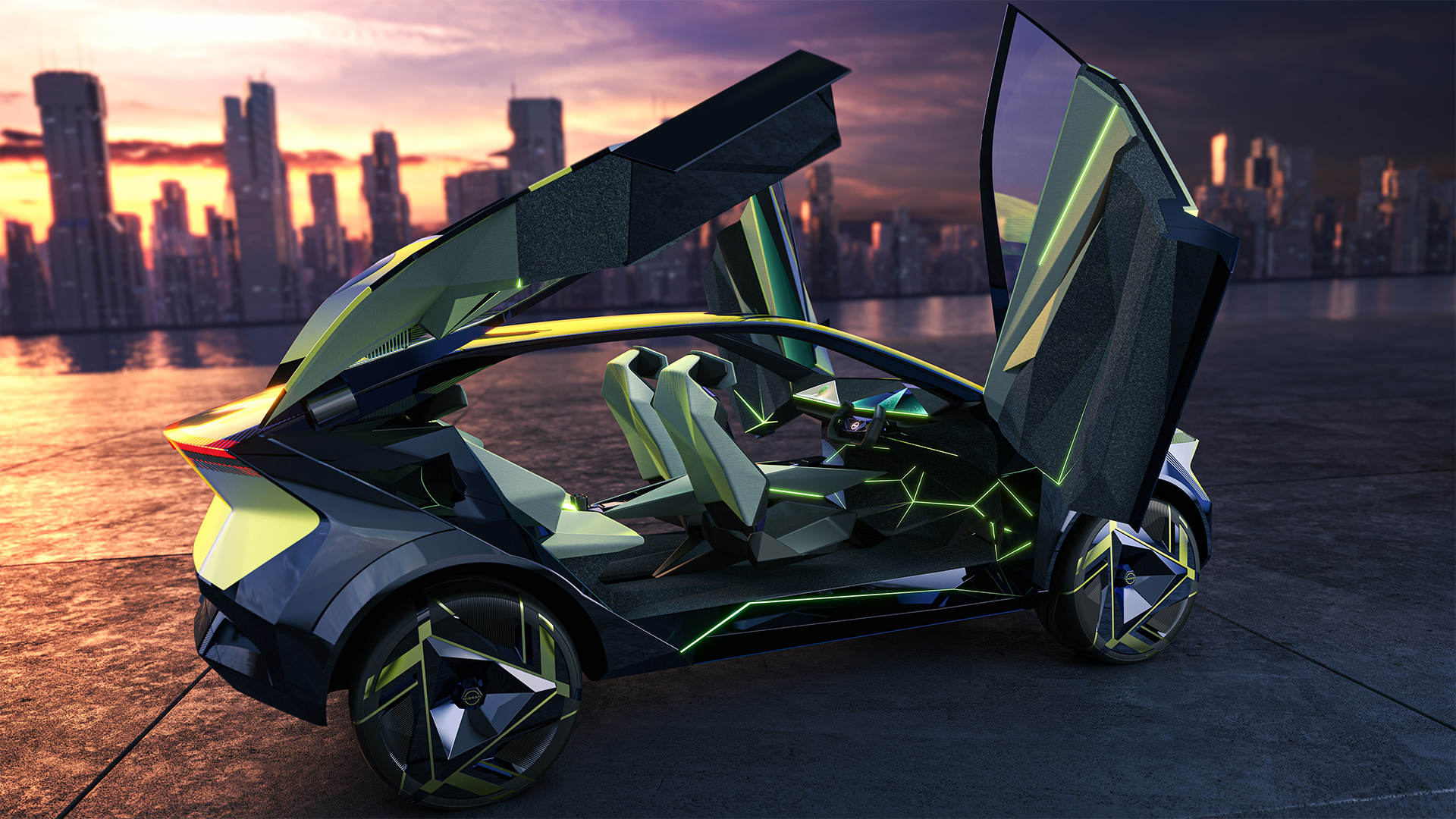Nissan hints at radically angular design future with Hyper Urban concept EV
Spiky city runaround will be unveiled later this month

Nisan is set to make a splash at the Japan Mobility show later this month, unveiling a raft of future mobility concepts that will hint at what we can expect from both the exterior design language and interior innovations expected in the marque’s upcoming slew of electric vehicles.
The first of its promised concepts is the spiky, angular and striking Hyper Urban concept that Nissan claims "complements the sophisticated tastes of its target users, such as urban- and suburban-based professionals who prioritize environmental sustainability".
The design study features a number of outlandish touches including the lime yellow body that, according to its maker, changes "chromatic expressions" depending on the angle that light hits it, effectively drawing attention while also "blending into the surrounds".
Front and rear scissor doors allow unencumbered access to a palatial interior that comfortably seats four in massive, First Class-style seating. The early sketches reveal a swiveling screen that rear passengers can share for infotainment purposes.

What's more, Nissan says the Hyper Urban concept is designed to seamlessly integrate with the owner's surroundings. As a result, the front seats can collapse and fold into the back seats, creating a sofa-like, private relaxing space.
This can then be driven inside a loft apartment or bungalow so that it becomes an interior space to unwind. Nissan clearly predicts car elevators will become mandatory in all new apartment builds in the future.
Nissan has long been at the forefront of V2H (vehicle to home) and V2G (vehicle to grid charging), where the car's battery can be used to power a domestic setting or feed surplus power to the grid to smooth out peaks in power demand or even earn the owner money.
Sign up for breaking news, reviews, opinion, top tech deals, and more.
The Hyper Urban concept is said to boast the technology, as well as an Intelligent Charging Management System that features AI to "autonomously charge vehicles and power buildings", providing more efficient management of power.

A design study for now
We know the concept cars of this nature are typically flights of fantasy and rarely sport the same striking looks when they go into production. That said, Nissan has been revealing a raft of concepts recently, including a racy Nissan Micra in its 20-23 concept, which could point towards a radical shift in design direction for the brand.
CEO Makoto Uchida has already committed to an all-electric line-up by 2030, so these far-fetched concepts could give an indication of what we could expect from an upcoming family of electric EVs destined to hit the road. Even if they don’t pack scissor doors and an interior "inspired by kaleidoscopic triangles".
You might also like

Leon has been navigating a world where automotive and tech collide for almost 20 years, reporting on everything from in-car entertainment to robotised manufacturing plants. Currently, EVs are the focus of his attentions, but give it a few years and it will be electric vertical take-off and landing craft. Outside of work hours, he can be found tinkering with distinctly analogue motorcycles, because electric motors are no replacement for an old Honda inline four.